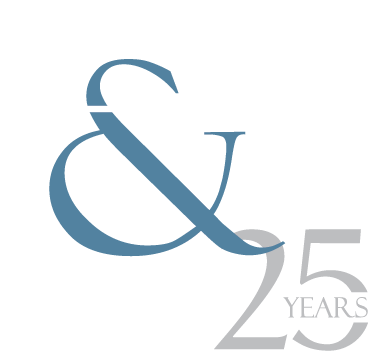Applying the Appropriate Standard for Recreational Activities in Delaware
One of the more challenging issues that employers and insurers face is determining the compensability of a claimant’s injury. More complex yet is the scenario in which a claimant is injured outside his or her normal work hours but during a quasi work-related recreational activity, such as a company softball league.
In a recent unreported decision, Morris James LLP v. Weller,2 the Superior Court of Delaware considered the compensability of an injury sustained by a law firm employee during his participation in the Wilmington Lawyers’ Softball League. The claimant ruptured his Achilles tendon while running bases during a softball game. The Industrial Accident Board (“Board”) found the claimant’s injury occurred during the course and scope of his employment. On appeal, however, the Court reversed the Board’s decision and remanded the case to the Board for the application of the proper legal standard. Although the Board’s new decision is yet to be determined, the Court’s analysis illustrates the proper application of the state’s laws regarding this type of recreational injury.
In Delaware, the threshold question for determining the compensability of a claim is whether or not the subject injury occurred during the course and scope of the claimant’s employment. The state’s courts have evaluated “arising out of ” and “in the course of ” employment as two separate elements. “Arising out of ” pertains to the origin and cause of the injury while “in the course of ” relates to the time, place, and circumstance of the accident.
As the Court in Weller explained, Delaware has adopted a four-factor test set forth in Larson’s Workers’ Compensation Law for determining whether an employer-sponsored recreational event falls within the course and scope of an injured worker’s employment. Those factors are: (1) the time and place; (2) the degree of employer initiative; (3) the financial support and equipment furnished by the employer; and (4) the employer benefit from the company team.3
If the recreational event is not employer-sponsored, a different test applies. That test is: (1) whether the event occurs on the premises during a lunch or recreation period as a regular incident of employment; (2) whether the employer, by expressly or impliedly requiring participation, or by making the activity part of the services of the employee, brings the activity within the orbit of the employment; or (3) whether the employer derives substantial direct benefit from the activity beyond the intangible value of improvement in employee health and morale that is common to all kinds of recreation and social life.4
An important distinction between these standards is that the employer-sponsored test requires all four factors to be met, while the non-sponsored test needs only one of the three factors to be present. It is also important to note the third prong, or “substantial benefit” factor, of the non-sponsored test specifically excludes intangible benefits from consideration.
In Weller, the claimant’s employer paid for the team’s jerseys, bats, and meals; signed a hold-harmless agreement with the practice field; and allowed employees to work on softball-related matters during working hours as well as permitted liberal leave to prepare for games. Witnesses testified that softball was a team building activity and boosted morale. There was conflicting testimony as to whether or not it enhanced productivity. The employer contended it did not solicit business or realize a direct benefit from putting its firm name on jerseys.
The Board determined the sponsor of the subject softball game was the Wilmington Lawyers’ Softball League, not the employer. Despite this, the Board incorrectly applied the employer-sponsored test. In reaching its decision, the Board found the employer “probably” obtained a benefit of increased productivity of its employees by their participation in the softball league. The Board also looked to the hold-harmless agreement executed by the employer and the employer’s liberal leave policy with respect to softball-related activities to determine that the softball game was within the course and scope of the claimant’s employment.
On appeal by the employer, the claimant conceded the Board had erred in applying the employer-sponsored standard. Nevertheless, the claimant argued the error was harmless as the employer had derived a direct benefit from the recreational activity–a factor included under both tests. Because only one factor is required to meet the non-sponsored test, the claimant suggested the Board would have reached the same decision regardless of which standard it applied.
The Court asserted it was unclear whether the Board would have found the probable increased productivity of employees playing softball amounted to the substantial benefit required under the non-sponsored test. The Court, citing again to Larson’s, further noted the test requires the employer benefit be direct and beyond the intangible value of increased employee efficiency and morale common to all social and recreational events. In the context of a recreational event such as a softball game, direct benefits have included employer advertising, publicity, and other such financial gain.
Ultimately, the Court found the Board’s application of the employer-sponsored test constituted legal error and remanded the case to the Board to apply the non-sponsored test. The Board’s decision is now pending.
As Weller demonstrates, when investigating the compensability of a claim occurring outside of work, it is necessary to first determine who sponsored the event in order to apply the appropriate legal standard. Other factors to take into consideration include the location of the event, its organizers, any financial support provided by the employer, the level of control and encouragement to participate exercised by the employer, and any monetary benefit to the employer.
2. This case is unpublished and only the Westlaw citation is currently available: 2017 WL 1040713.
3. 2 Arthur Larson and Lex K. Larson, Larson’s Workers’ Compensation Law, § 22.04[4][b]–[e] (LEXIS Publishing 2001).
4. See State v. Dalton, 878 A.2d 451, 455 (Del. 2005) (citing to 2 Larson’s Workers’ Compensation Law at § 22.01).




